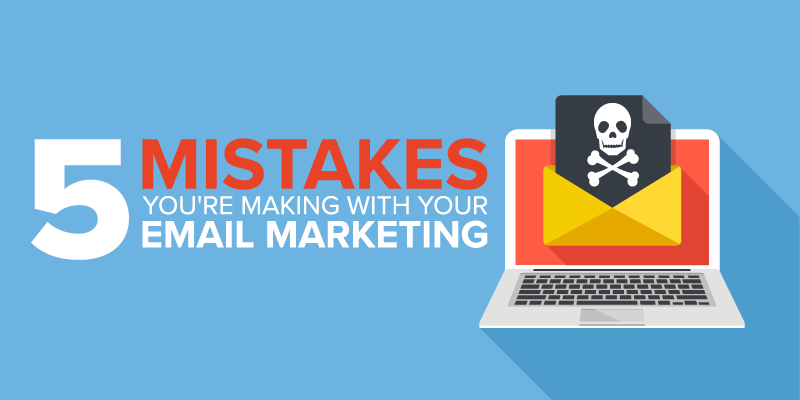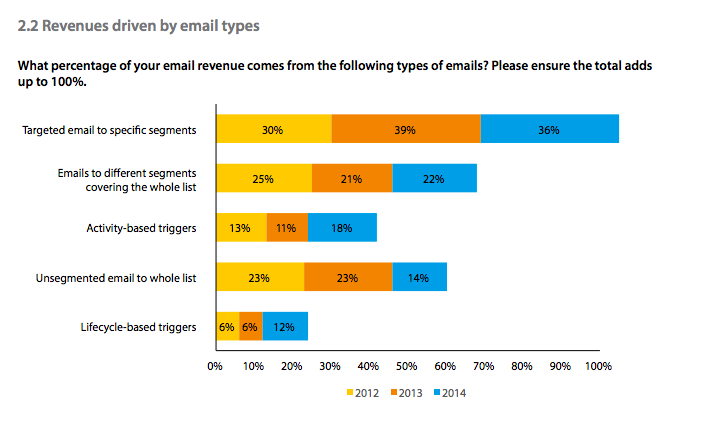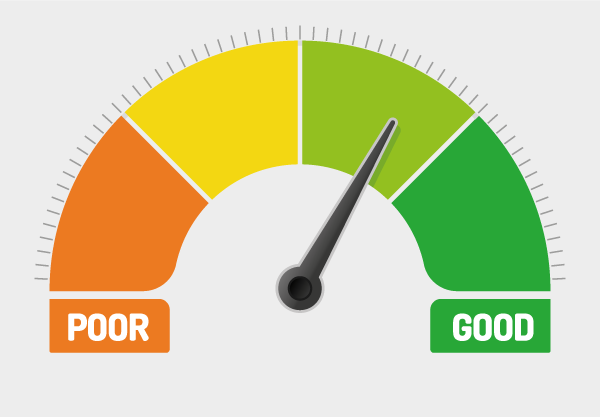
Email is one of the most effective tools in the digital marketing arsenal—except when it isn’t. If you’ve tried your hand at it and failed, you may be ready to give up on the whole idea. But don’t do that just yet, because I’ve got good news for you. But there’s bad news I have to get out of the way first: I’m pretty sure that YOU are the problem, not email. If you tie a string to a hammer and then only hold it by the string, you’ll never get that nail into the wood. But you can’t blame the hammer for it. Likewise, email is a proven marketing winner. If you’re not getting results you might just be doing it wrong.
So what’s the good news? Well, it’s that you are the problem, and that’s an easier fix. There’s more to email marketing than sending off a newsletter every month reminding people that you exist. There’s a lot that goes into creating email campaigns, and if you’re having problems converting readers to customer, it’s possible there’s something you’ve overlooked in the process. Have a look at this list of common email marketing mistakes and see if any of them sound familiar. If they do, you can bask in the feeling of knowing that you are not alone on this earth. But don’t bask too long, you have mistakes to fix:
1. You’re Selling Too Hard
OK, sure. The point of email marketing is to advertise your business and turn subscribers into buyers. But that doesn’t mean your email needs to read like an ad. If you’re sending out newsletters that only list products or services for sale, people will unsubscribe. The people on your list have already demonstrated they’re interested in your products by opting into your emails in the first place.
Don’t show them things they can buy: give them reasons to buy those things from you.
Make it relatable. If you’re introducing new t-shirts, start with a personal message about how hot the weather is getting. Actually, don’t be that boring person who talks about the weather but do write your message as if you were reaching out to a friend. Anything that reminds your readers that there was a person on the other end of that message who created it is a good thing.
2. Your Content is Irrelevant
Everyone subscribed to your newsletter has an interest in your business, but that’s about the only generalisation you can make with certainty. Women won’t care if you have beard grooming products, vegetarians don’t want to hear about the new steak sandwich on your menu, and young men aren’t interested in seeing your women’s underwear collection. OK, that last one was a bad example, but my point remains. If you’re sending emails that are irrelevant to the recipient, it’s only a matter of time before they opt out.
One effective strategy is to segment based on purchase frequency. Regular buyers might appreciate loyalty rewards, while occasional buyers could be encouraged with special offers.
Another approach is to segment by engagement levels. Identify who consistently opens your emails versus those who only engage sporadically, and tailor your content accordingly. Behavioural data can also segment your audience into those who respond to certain types of content. These varied segmentation strategies not only help in crafting messages that resonate but also boost engagement rates.
For better results, start segmenting your audience and then tailoring the message according the group they’re in. According to the Direct Marketing Association, segmented/targeted emails generate 58% of all email marketing revenue—so this should be a priority for you.
 Source: DMA
Source: DMA
To do this, you’re going to need data about your subscribers. Start with your customers: if you’re using a POS or CRM platform, you can get a lot of insights as to the kinds of items people are interested just by looking at their purchase histories. You can segment your audience according to purchases—Shoe Buyers, Steak Lovers, Apple Pay Users—and ensure that people are receiving content they’ll find relevant.
Oh, and if you have subscribers that aren’t yet customers? That’s a segment right there, one which you can easily target with attractive incentives to buy something.
3. Your Clickbait-y Subjects Have to Be Seen to Believed!!!
Don’t promise to blow anyone’s mind with your deals. Say nothing of how your readers may experience all the feels when they try your new entree. Keep generally mum about whether your email may or may not be life changing. Hyperbole has no place in marketing, and readers are slick enough to know that there’s nothing you can offer them through your mobile store that’s going to alter their perception of existence. They will open your email expecting disappointment, and then they’ll be more disappointed than expected. Irritating subject lines that are long on promises and short on delivering them are a pretty effective way of losing subscribers.
Consider personalising subject lines with location or recent purchases as triggers. This approach can create a sense of relevance and timeliness.
It’s also beneficial to periodically test your subject lines. Experiment with different lengths, tones, and emojis to see which combinations yield the highest open rates. A/B testing is your friend here, providing insights that can inform your next email campaign strategy and help maintain your reader’s interest.
Keep your subjects short and to the point, but try to keep them casual in tone.

Source: Slate
4. You’re Not Testing Your Emails
Before you send an email out to thousands of your subscribers, you might want to test a few variations of it to see what works better. If you’re using an email marketing platform like MailChimp or Campaign Monitor, you can make use of their A/B testing tools. Start with a small segment of your audience split into two groups. Send out your variations, one to each group, and measure the performance. Each email should be saying the same message—whether for a sale or an announcement—but in slightly different ways. Maybe the subject lines are different, or one has a more humorous tone. Whatever the differences are, you’ll be able to pinpoint the right way to broadcast the message out to the rest of your audience. Doing this can also help you refine your tone and style over time so that you’ll eventually arrive at something people might even look forward to reading. When sending emails in bulk, use bulk verification tools to make sure your emails are being received.
Mobile Optimization in Email Marketing
Many readers now check emails on their phones, highlighting the need for mobile-friendly designs. Emails should have responsive layouts, allowing them to adjust smoothly to various screen sizes.
Use larger fonts and simple, singular columns to make reading easier. Ensure that calls to action are easy to tap by avoiding tiny or crowded links. By optimising for mobile, you make sure your audience can engage with your content wherever they are, boosting interaction and conversion rates.

5. Your Emails are All About You
Is your email marketing just a string of promotional messages that list all the ways you and/or your products and/or services are great and/or the best? Then you’ve got something that’s just as annoying to read as that last sentence I wrote. Your emails need to offer value to your readers. That could be something as simple as offering a subscribers-only discount or exclusive access to new products. Even if you’re just using the message to get creative, writing up a funny story that happened in your shop, you’ll give your readers good reasons to open and engage with your messaging.
Analyzing Email Campaign Performance
Tracking the success of your email campaigns isn’t just about open and click rates. Diving deeper into analytics can provide a clearer picture of your campaign’s effectiveness.
Look at conversion rates—how many email recipients take the desired action—and churn rates to understand unsubscription behaviours. Analysing these metrics over time helps refine your strategies and better target future communications. Use this data to identify trends within your audience and adjust content to better meet their expectations.
Ultimately, what this list points to is that email marketing isn’t something you can just “do.” It takes thought, strategising, experimentation, and a good amount of creative energy. But there is a reward for that effort, and that comes in the form of loyal customers who will continue to spend money with you. Mostly, though, the time spent will account for the bulk of your expenses with email marketing. Even if you use marketing automation services, you’ll be spending a lot less than with traditional, or even social media, marketing. Don’t worry about that, though: for every dollar spent on email marketing, business owners see a $38 return on investment. All that’s left to think about is how to do it right.
Personalization Beyond Name Inserts
Personalisation goes beyond simply inserting a recipient’s name. Incorporate past interaction data to tailor recommendations or suggest products of interest.
For instance, highlight products similar to those they’ve previously purchased. Offering personalised discounts or content based on browsing behaviours can also increase engagement. This approach helps forge a closer connection with your audience, encouraging them to view your emails not just as promotions, but as engaging content relevant to their needs.

2 thoughts on “5 Email Marketing Mistakes You Might Be Making”